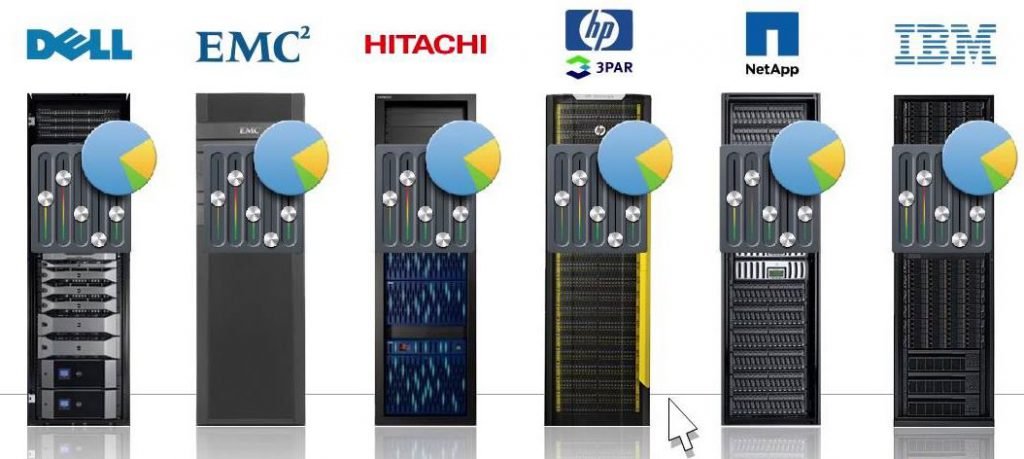The storage space from the storage systems is assigned to the individual physical hosts or VMware (hypervisor) hosts whenever it is requested. This allocation of storage to the hosts is generally referred as Storage Provisioning. Also in recent years, Storage industry has evolved with high-quality capacity optimization technologies which can be deployed for the efficient provisioning and use of the storage resources. Lets look at these techniques and their limitations.
Storage Provisioning
Storage provisioning is the process of assigning storage resources to hosts based on capacity, availability, and performance requirements. Storage provisioning can be performed in two ways
- Traditional Storage Provisioning or Thick Provisioning
- Virtual Storage Provisioning or Thin Provisioning
Thick provisioning is basically allocating the required amount of storage volumes to the hosts whereas Thin provisioning is dynamically allocating extra virtual storage volumes which can be used by the hosts on demand.
However, for any type of storage provisioning, the LUN masking function should be implemented on the storage system to ensure that volume access by hosts is controlled appropriately, preventing unauthorized or accidental use in a shared environment. For example, consider a storage system with two LUNs that store data of the Accounts and finance departments. Without LUN masking, both departments can easily see and modify each other’s data, posing a high risk to data integrity and security. With LUN masking, LUNs are accessible only to the designated hosts.
We will discuss about these types of storage provisioning in next post.
Storage Capacity Optimization Techniques
SNIA uses the term capacity optimization methods to refer to all methods used to reduce the space required to store persistent data. Capacity optimization technologies are all about storing more data on less hardware. However, just as with most technologies, capacity optimization technologies can increase or decrease overall storage and system performance. So It all depends on how the technology is implemented or deployed. It can vary from environment to environment.
Types of Capacity Optimization Technologies
Thin Provisioning: Thin provisioning (TP) technology allows to allocate more storage than you physically have, resulting in higher utilization of storage resources.Thin provisioning is the process of allocating storage capacity on demand rather than reserving large amounts of space up front just in case you might need it years later. This might also result in over-provisioning and must be managed and monitored so you do not overrun the physical capacity in your storage array.
Compression: Compression is the well-known capacity optimization technology which re-encode data so that it can be stored and transmitted using fewer bits and bytes, enabling you to store more data with less physical capacity. Compression also allows us to transmit data quicker over networks consuming less bandwidth. Compression is now part of all good backup solutions and are increasingly popular in all-flash storage arrays.
Deduplication: Deduplication is also the popular and well-known capacity optimization technology which replaces the multiple copies of identical data with references to a single shared copy. Deduplication works by recognizing duplicate blocks of data, and replacing the duplicate blocks with pointers. Variable-block deduplication is recognized as a leading approach to deduplication. Deduplication technologies are also the part of all the backup solutions and are increasingly popular in all-flash storage arrays.
Sub-LUN Auto-Tiering: The traditional tiering technology seek to place data on appropriate storage mediums, usually based on frequency of access to the data, such as moving infrequently accessed data down to cheaper, slower storage and putting more frequently accessed data on more-expensive, higher-performance storage. The draw back of the traditional auto-tiering is that it has to move the entire volume even if small amounts of data has to move up the tier.
Whereas sub-LUN auto-tiering technology do not increase your usable capacity, it works by only moving frequently accessed blocks of data on high-performance media such as solid-state media, while placing infrequently accessed blocks of data on slower, cheaper storage media. Smaller extent sizes yield better efficiencies with sub-LUN auto-tiering technology.
All the above capacity optimization techniques are discussed more in the next couple of posts.
Go To >> Index Page
Go To >> Index Page
Sponsored Links




